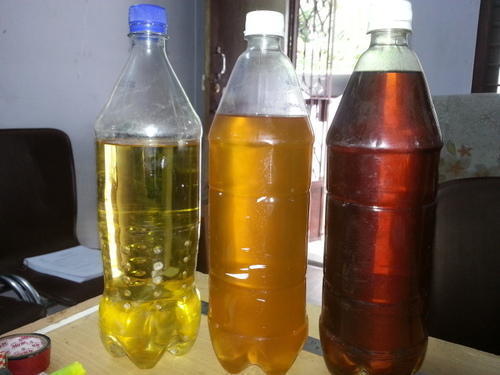In the pursuit of sustainable solutions for waste management and energy generation, mini skid-mounted systems have emerged as a groundbreaking technology. These compact units offer the ability to transform various types of waste into valuable oil through the process of pyrolysis. In this comprehensive exploration, we delve into the intricacies of mini pyrolysis plant, their operational principles, environmental implications, and the potential they hold for revolutionizing waste-to-oil conversion.

Understanding Mini Skid-Mounted Systems:
Compact Powerhouses:
Mini skid-mounted systems are designed as compact, portable units that can be easily transported to different locations. Despite their small size, these systems pack a powerful punch in terms of waste conversion capabilities.
On-the-Go Recycling:
The mobility of mini skid-mounted systems sets them apart, enabling on-site waste processing. This feature is particularly advantageous in scenarios where transporting large quantities of waste to a centralized facility is impractical. The continuous pyrolysis machine is different with mini type. Continuous type is suitable for large-scale production.
Operational Principles of Mini Skid-Mounted Pyrolysis:
Pyrolysis Basics:
The core principle involves subjecting organic materials to high temperatures in the absence of oxygen, initiating a thermal decomposition process known as pyrolysis. This process breaks down the complex molecular structure of waste into valuable by-products, including oil.
Temperature and Residence Time:
Mini skid-mounted systems carefully control temperature and residence time to optimize the pyrolysis process. These factors influence the yield and quality of the resulting oil, making precise control crucial for efficiency.
Feedstock Flexibility:
One of the strengths of mini skid-mounted systems lies in their versatility regarding feedstock. They can process a variety of waste materials, including plastics, rubber, biomass, and more, contributing to a flexible and adaptable waste management solution.
Advantages of Mini Skid-Mounted Waste-to-Oil Conversion:
Portability and Accessibility:
The ability to transport mini skid-mounted systems to the location of waste generation reduces the logistical challenges associated with waste transportation. This portability enhances accessibility, especially in remote or constrained areas.
Reduced Carbon Footprint:
By processing waste on-site, mini skid-mounted systems minimize the carbon footprint associated with transporting waste to distant facilities. This contributes to a more sustainable and eco-friendly waste management approach.
Energy Independence:
Mini skid-mounted systems offer the potential for localized oil production, promoting energy independence in various settings. This can be particularly valuable in off-grid locations or areas with limited access to traditional energy sources.
Environmental Implications of Mini Skid-Mounted Systems:
Emissions Control:
Efforts to minimize emissions are integral to the design of mini skid-mounted systems. Advanced gas-cleaning technologies ensure that harmful by-products are captured, reducing the environmental impact of the pyrolysis process.
Waste Reduction:
By converting waste into valuable oil, these systems contribute to waste reduction, diverting materials from landfills and mitigating the environmental challenges associated with traditional disposal methods.
Biomass Utilization:
Mini skid-mounted systems can process biomass waste, providing an eco-friendly alternative to burning or disposal. This not only reduces the environmental impact but also harnesses the energy potential inherent in organic materials.
Challenges and Considerations:
Technological Complexity:
Despite their compact size, mini skid-mounted systems can be technologically complex. Proper training and maintenance are crucial to ensuring optimal performance and preventing operational challenges.
Feedstock Quality:
The quality of the oil produced is influenced by the quality of the feedstock. Contaminants or impurities in the waste stream can affect the composition of the oil, necessitating careful consideration of feedstock sources.
Case Studies in Mini Skid-Mounted Systems:
Mobile Pyrolysis Units in Waste-Intensive Industries:
Industries with significant waste production, such as manufacturing or agriculture, have adopted mini skid-mounted systems for on-site waste conversion. This approach not only addresses waste management challenges but also extracts value from waste materials.
Community-Based Waste-to-Oil Initiatives:
Some communities, particularly in remote or underserved areas, have embraced community-scale mini skid-mounted systems. These initiatives empower local residents to manage their waste sustainably while generating a local supply of oil for various purposes. If you are interested in this machine, consult Beston Group China.
The Future Landscape:
Advancements in Technology:
Ongoing research and development are expected to bring about advancements in mini skid-mounted system technology. Improvements in efficiency, automation, and control systems will further enhance their appeal and effectiveness.
Integration with Circular Economy Models:
Mini skid-mounted systems align with the principles of the circular economy by transforming waste into a valuable resource. As circular economy models gain prominence, these systems will play a pivotal role in closing the loop on waste management.
Conclusion:
Mini skid-mounted systems represent a paradigm shift in waste management and energy production, offering a dynamic solution to the challenges posed by traditional waste disposal methods. By converting waste into valuable oil on-site, these compact powerhouses contribute to environmental sustainability, energy independence, and waste reduction. As technology continues to evolve and the demand for localized and eco-friendly solutions grows, mini skid-mounted systems are poised to play a central role in shaping the future of waste-to-oil conversion, providing a beacon of innovation in the quest for a cleaner and more sustainable planet.